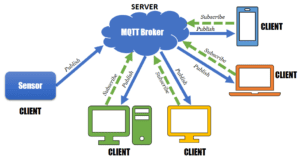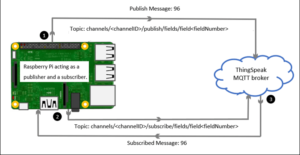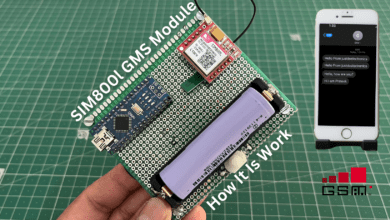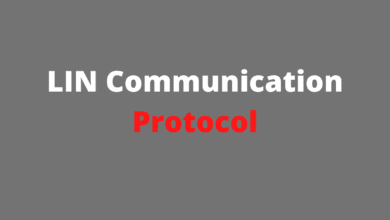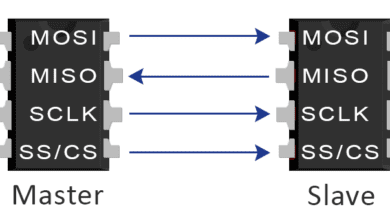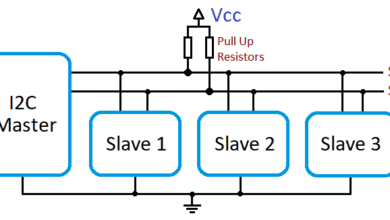
Articles
Basic of MQTT Protocol
Introduction
In the realm of the Internet of Things (IoT) and machine-to-machine (M2M) communication, the need for an efficient and scalable messaging protocol led to the development of MQTT (Message Queuing Telemetry Transport). Created by IBM’s Andy Stanford-Clark and Cirrus Link Solutions’ Arlen Nipper in 1999, MQTT has emerged as a lightweight and versatile protocol for facilitating communication between devices. This article aims to provide a comprehensive explanation of MQTT, its key concepts, and its significance in the IoT landscape.
MQTT Key Components
- MQTT Client: An MQTT client is any device or application that connects to an MQTT broker to publish or subscribe to messages. Clients can be sensors, actuators, smartphones, servers, or any other device capable of MQTT communication. MQTT clients are responsible for generating and sending messages, as well as receiving and processing incoming messages.
- MQTT Broker: The MQTT broker acts as an intermediary between MQTT clients. It receives messages published by clients and distributes them to the appropriate subscribers. The broker is responsible for maintaining client connections, managing topics and subscriptions, and ensuring reliable message delivery based on the specified QoS levels. It also retains messages for offline clients and manages security and authentication.
- Topics: Topics are the channels through which MQTT clients categorize and filter messages. Clients can subscribe to specific topics of interest or publish messages to specific topics. Topics use a hierarchical structure, allowing for flexible organization and routing of messages. For example, a topic structure can be “sensors/temperature” or “devices/+/status”, where the “+” wildcard represents any subtopic.
- Quality of Service (QoS): MQTT supports different levels of Quality of Service, which define the guarantees for message delivery. The three QoS levels are:
- QoS 0 (At most once): Messages are delivered once without retention or acknowledgment. There is no guarantee of message delivery.
- QoS 1 (At least once): Messages are delivered at least once to the subscriber. The broker ensures retransmission until the subscriber acknowledges receipt.
- QoS 2 (Exactly once): Messages are delivered exactly once to the subscriber through a four-step handshake process to ensure no duplication or loss.
MQTT Methods
- Connect: The Connect method is used by an MQTT client to establish a connection with the MQTT broker. The client sends a Connect message to the broker, providing identification and, if required, authentication credentials. The Connect method initiates the MQTT session and allows the client to start publishing or subscribing to messages.
- Publish: The Publish method is used by an MQTT client to send a message to the MQTT broker for distribution. The client specifies the topic to which the message is published, the message payload (the actual data), and the desired QoS level for message delivery. The Publish method allows clients to share information or data with other clients subscribed to the same topic.
- Subscribe: The Subscribe method is used by an MQTT client to express interest in receiving messages published on specific topics. The client sends a Subscribe message to the broker, specifying the topic(s) to subscribe to and the desired QoS level for message delivery. Once subscribed, the client will receive messages published to the subscribed topics from the broker.
- Unsubscribe: The Unsubscribe method is used by an MQTT client to stop receiving messages published on specific topics. The client sends an Unsubscribe message to the broker, specifying the topic(s) to unsubscribe from. After unsubscribing, the client will no longer receive messages published to the unsubscribed topics.
- Disconnect: The Disconnect method is used by an MQTT client to terminate the MQTT session and disconnect from the broker. The client sends a Disconnect message to the broker, indicating its intention to end the connection. The Disconnect method allows clients to gracefully disconnect from the MQTT broker when they no longer require communication.
Advantage of MQTT
- Lightweight and Efficient: MQTT is designed to be lightweight and efficient, making it well-suited for resource-constrained devices and networks with limited bandwidth. It has a small code footprint, requiring minimal processing power and memory. This efficiency results in reduced energy consumption and optimized network utilization.
- Bandwidth Efficiency: MQTT uses a publish-subscribe model, where data is only sent to subscribers interested in specific topics. This targeted message delivery reduces network traffic and conserves bandwidth. MQTT also employs a compact binary protocol that further reduces the size of the messages, resulting in efficient data transmission.
- Asynchronous Communication: MQTT allows asynchronous communication between clients and brokers. Publishers and subscribers do not need to be active simultaneously, enabling devices to operate on intermittent or unreliable network connections. MQTT brokers store messages for offline clients and deliver them when the clients reconnect, ensuring message reliability and consistency.
- Scalability: MQTT supports a scalable architecture, allowing for easy integration of a large number of devices and applications. The publish-subscribe model enables a one-to-many communication pattern, where a single publisher can send messages to multiple subscribers. This scalability makes MQTT suitable for IoT deployments with thousands or even millions of connected devices.
- Reliability and Quality of Service: MQTT provides different levels of Quality of Service (QoS) to ensure reliable message delivery. The QoS levels allow publishers and subscribers to specify the desired level of assurance for message delivery, ranging from fire-and-forget to guaranteed delivery. This flexibility enables trade-offs between efficiency and reliability based on application requirements.
- Flexible and Dynamic Topic Structure: MQTT’s topic-based message routing provides flexibility and simplicity in organizing and filtering messages. Topics can be created dynamically, allowing devices and applications to adapt to changing needs. The hierarchical topic structure with wildcards enables efficient message filtering and selective subscription, reducing unnecessary message processing.
- Easy Integration and Wide Support: MQTT has a well-defined protocol specification and is supported by a wide range of client libraries, SDKs, and platforms. It is compatible with various programming languages and operating systems, making it easy to integrate MQTT into different IoT ecosystems. Additionally, MQTT brokers can communicate with each other using MQTT’s own lightweight protocol, enabling interoperability between different broker implementations.
- Security and Authentication: MQTT supports security measures such as Transport Layer Security (TLS) encryption and username/password-based authentication. It ensures secure communication and protects data integrity, making MQTT suitable for sensitive applications that require secure and private data exchange.
Disadvantage of MQTT
- Complexity in High-QoS Level Implementation: Implementing the highest level of Quality of Service (QoS 2 – Exactly once) in MQTT can be more complex and resource-intensive than lower QoS levels. The four-step handshake process required for QoS 2 can introduce additional overhead and latency, impacting the overall performance of the MQTT system.
- Potential Message Loss for QoS 0: At the lowest Quality of Service level (QoS 0 – At most once), MQTT offers no guarantees of message delivery. While this level of QoS can be sufficient for certain applications, it may result in occasional message loss, especially in unreliable or congested networks. It’s important to consider the trade-off between message delivery guarantees and the potential for loss in each application scenario.
- Lack of Built-in Security: While MQTT supports security mechanisms such as Transport Layer Security (TLS) for encryption and authentication, the protocol itself does not enforce security by default. Implementing and configuring security measures is the responsibility of the system designer or developer. Failure to properly secure the MQTT communication can expose devices and data to potential security risks.
- Increased Network Overhead: Although MQTT is designed to be lightweight and efficient, it still adds some overhead to the network. MQTT messages include additional metadata, such as topic names and QoS levels, which increase the overall message size. In scenarios with limited bandwidth or strict data limitations, this extra overhead can be a concern.
Application of MQTT
- Internet of Things (IoT): MQTT is widely employed in IoT applications due to its lightweight nature, efficient message delivery, and scalability. It enables communication between IoT devices, sensors, gateways, and cloud-based systems.
- MQTT’s publish-subscribe model allows devices to publish data to specific topics and other devices to subscribe to those topics to receive the data. This makes MQTT ideal for real-time monitoring, control systems, home automation, smart cities, asset tracking, and more.
- Machine-to-Machine (M2M) Communication: MQTT facilitates M2M communication by providing a reliable and efficient messaging infrastructure. It enables machines and systems to exchange data, commands, and status updates seamlessly. M2M applications that benefit from MQTT include industrial automation, remote monitoring and control, telemetry, fleet management, energy management, and logistics.
- Mobile Applications: MQTT is well-suited for mobile applications where efficient data transfer and battery optimization are crucial. It allows mobile devices to consume or publish data in a resource-efficient manner, making it ideal for mobile messaging, push notifications, real-time location tracking, and mobile telemetry.
- Real-time Analytics and Data Streaming: MQTT’s fast and lightweight messaging capabilities make it suitable for real-time analytics and data streaming scenarios. It allows for the efficient transfer of sensor data, events, and alerts to analytics platforms for real-time processing and decision-making. This is applicable in areas such as financial services, smart grids, smart buildings, and healthcare.
Conclusion
- In conclusion, MQTT stands as a lightweight, flexible, and efficient messaging protocol designed specifically for IoT and M2M applications.
- With its publish-subscribe model, hierarchical topics, QoS levels, and support for persistent sessions, MQTT simplifies communication and data exchange among devices. Its security measures and compatibility further contribute to its significance in the IoT landscape.
- As IoT continues to evolve, MQTT remains a reliable choice for enabling seamless connectivity and real-time data transfer in the ever-expanding world of interconnected devices.
More Article

